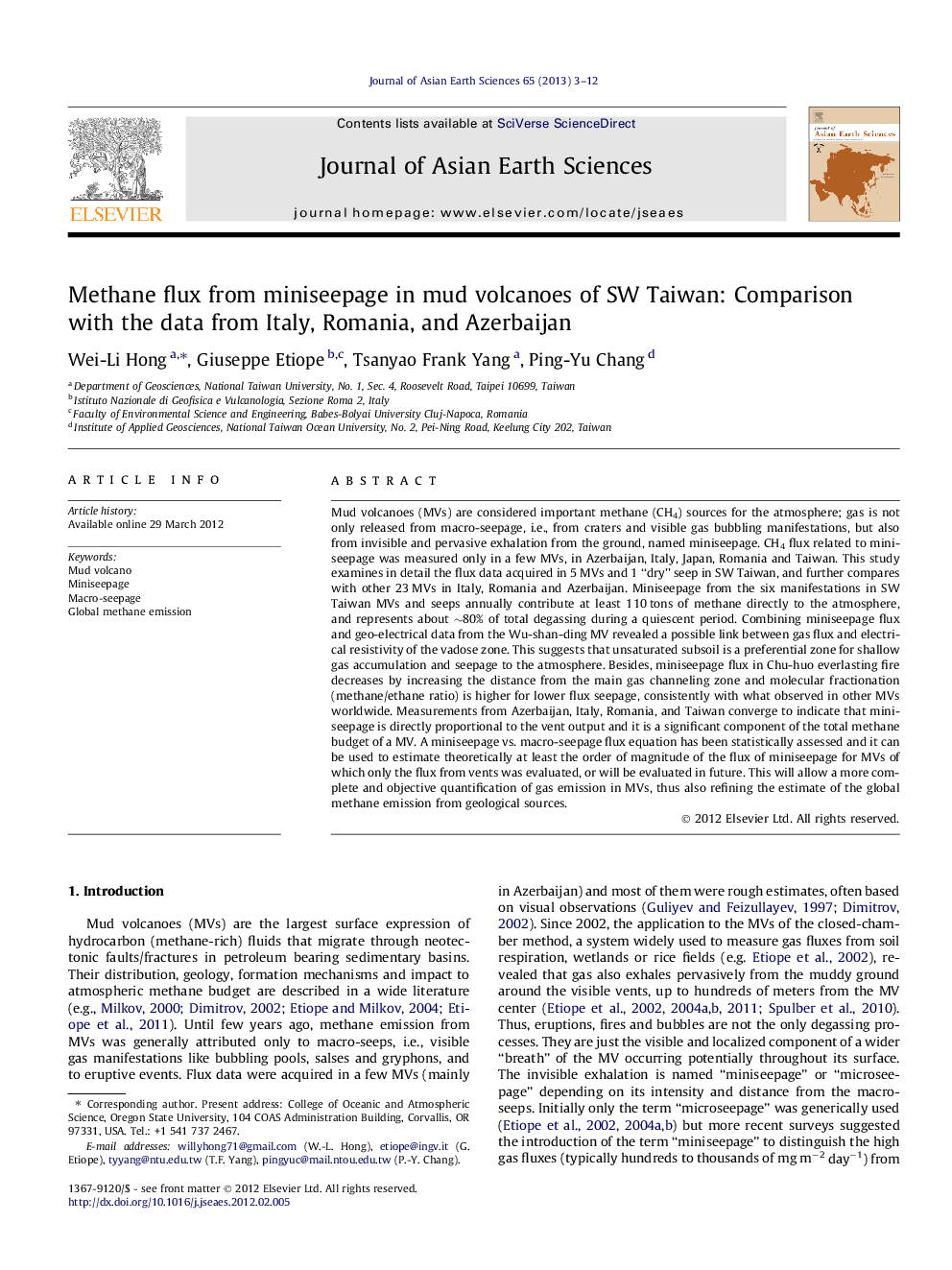| Article ID | Journal | Published Year | Pages | File Type |
|---|---|---|---|---|
| 4731190 | Journal of Asian Earth Sciences | 2013 | 10 Pages |
Mud volcanoes (MVs) are considered important methane (CH4) sources for the atmosphere; gas is not only released from macro-seepage, i.e., from craters and visible gas bubbling manifestations, but also from invisible and pervasive exhalation from the ground, named miniseepage. CH4 flux related to miniseepage was measured only in a few MVs, in Azerbaijan, Italy, Japan, Romania and Taiwan. This study examines in detail the flux data acquired in 5 MVs and 1 “dry” seep in SW Taiwan, and further compares with other 23 MVs in Italy, Romania and Azerbaijan. Miniseepage from the six manifestations in SW Taiwan MVs and seeps annually contribute at least 110 tons of methane directly to the atmosphere, and represents about ∼80% of total degassing during a quiescent period. Combining miniseepage flux and geo-electrical data from the Wu-shan-ding MV revealed a possible link between gas flux and electrical resistivity of the vadose zone. This suggests that unsaturated subsoil is a preferential zone for shallow gas accumulation and seepage to the atmosphere. Besides, miniseepage flux in Chu-huo everlasting fire decreases by increasing the distance from the main gas channeling zone and molecular fractionation (methane/ethane ratio) is higher for lower flux seepage, consistently with what observed in other MVs worldwide. Measurements from Azerbaijan, Italy, Romania, and Taiwan converge to indicate that miniseepage is directly proportional to the vent output and it is a significant component of the total methane budget of a MV. A miniseepage vs. macro-seepage flux equation has been statistically assessed and it can be used to estimate theoretically at least the order of magnitude of the flux of miniseepage for MVs of which only the flux from vents was evaluated, or will be evaluated in future. This will allow a more complete and objective quantification of gas emission in MVs, thus also refining the estimate of the global methane emission from geological sources.
